Prodigy From Russia Travels, Transforms, Teaches
Set aside matryoshka stacking dolls and Byzantine scenes of onion domes to make way for modern Muscovite artist and teacher Yulia Jeltuhin.
After 37 years with the Atlanta Journal-Constitution and now with the AJT, , Jaffe’s focus is lifestyle, art, dining, fashion, and community events with emphasis on Jewish movers and shakers.
Set aside matryoshka stacking dolls and Byzantine scenes of onion domes to make way for modern Muscovite artist and teacher Yulia Jeltuhin. Tucked away in Roswell, her home is replete with her own work, while the spacious lower level houses the teaching studio.
Jelthuhin has mastered many media: oil, collage, paper-mache and watercolor. “My work is a merger of graphic design and classical fine art. I work on several pieces concurrently, filling my studio with layers of developing compositions.”
At 10, her artistic talent surfaced. She was trained in studios of prominent artists such as E.V. Lapin, the student of famous Russian artist, A.V. Kuprin, and attended Moscow Central Art School.
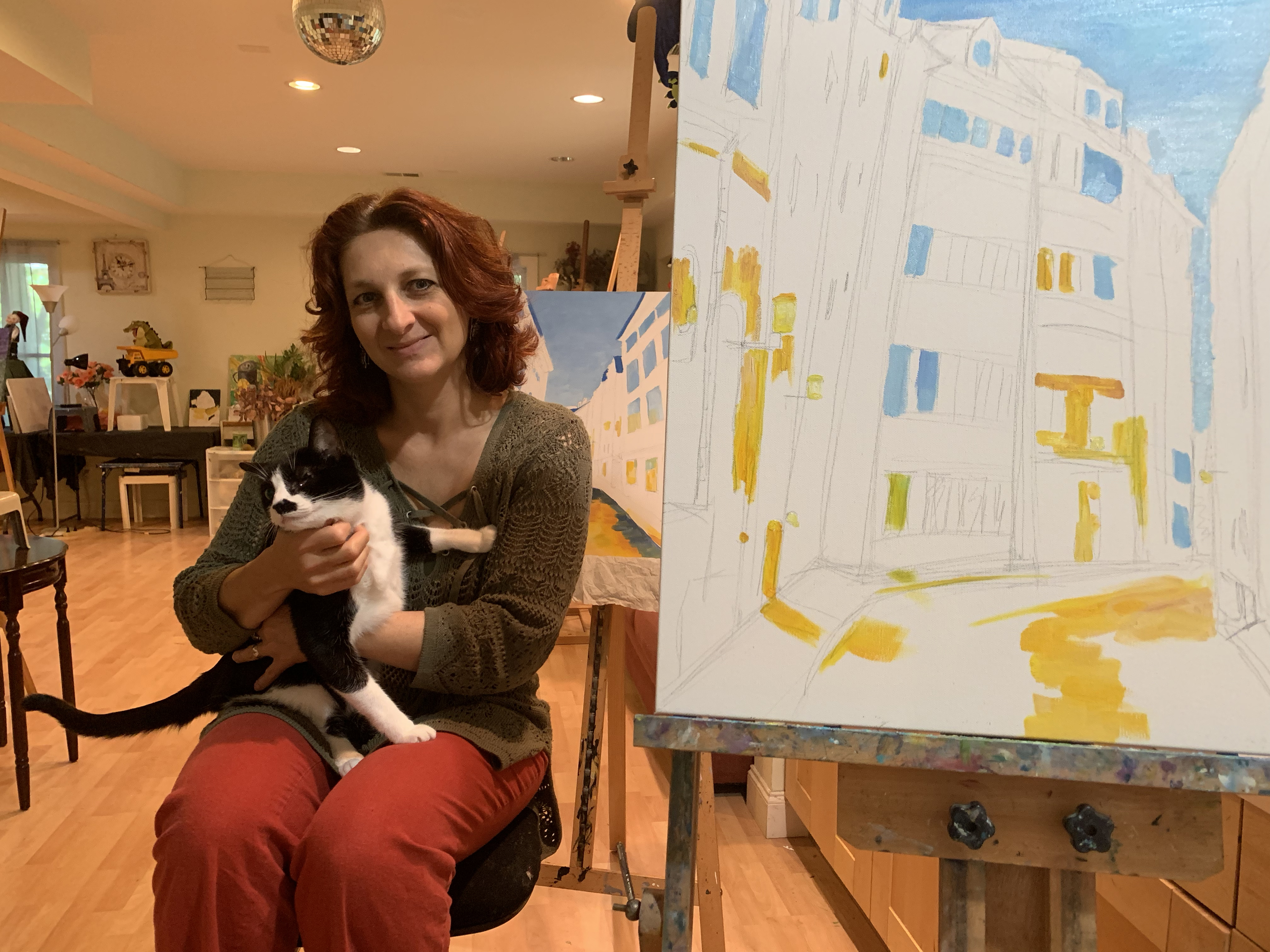
Regarding her teaching method, she elaborated, “I try to inspire students to apply what they learn in their math and science classes to enrich their art. Creativity also requires thought process and innovation.”
Jeltuhin is a member of Roswell Fine Arts Alliance and National Collage Society. Her work is on display at the Ace Gallery and the Fickle Pickle. It has been exhibited in Roswell City Hall. Collectors in the U.S., Israel, Canada, Scandinavia and Europe own her work.
Learn more about her versatility here.
Jaffe: What was life like in Russia?
Jeltuhin: Many Jews in Moscow were assimilating. Everyone was supposed to be an atheist. The only “religion” was the imposed Communist doctrine. If you thought differently, you kept it to yourself. Being a Jew by blood – which was stated on my birth certificate and passport – and growing up in Russia, I always felt like an outsider, even though it was my birthplace. We were often reminded that we “didn’t belong.”
Jaffe: Slavic Jewish artists such as Chagall showed the influence of folk life in an imaginative, dream-like style. Kandinsky produced some of the first abstracts, freeing art from the need to depict recognizable subjects. What Russian characteristics or themes do you incorporate?
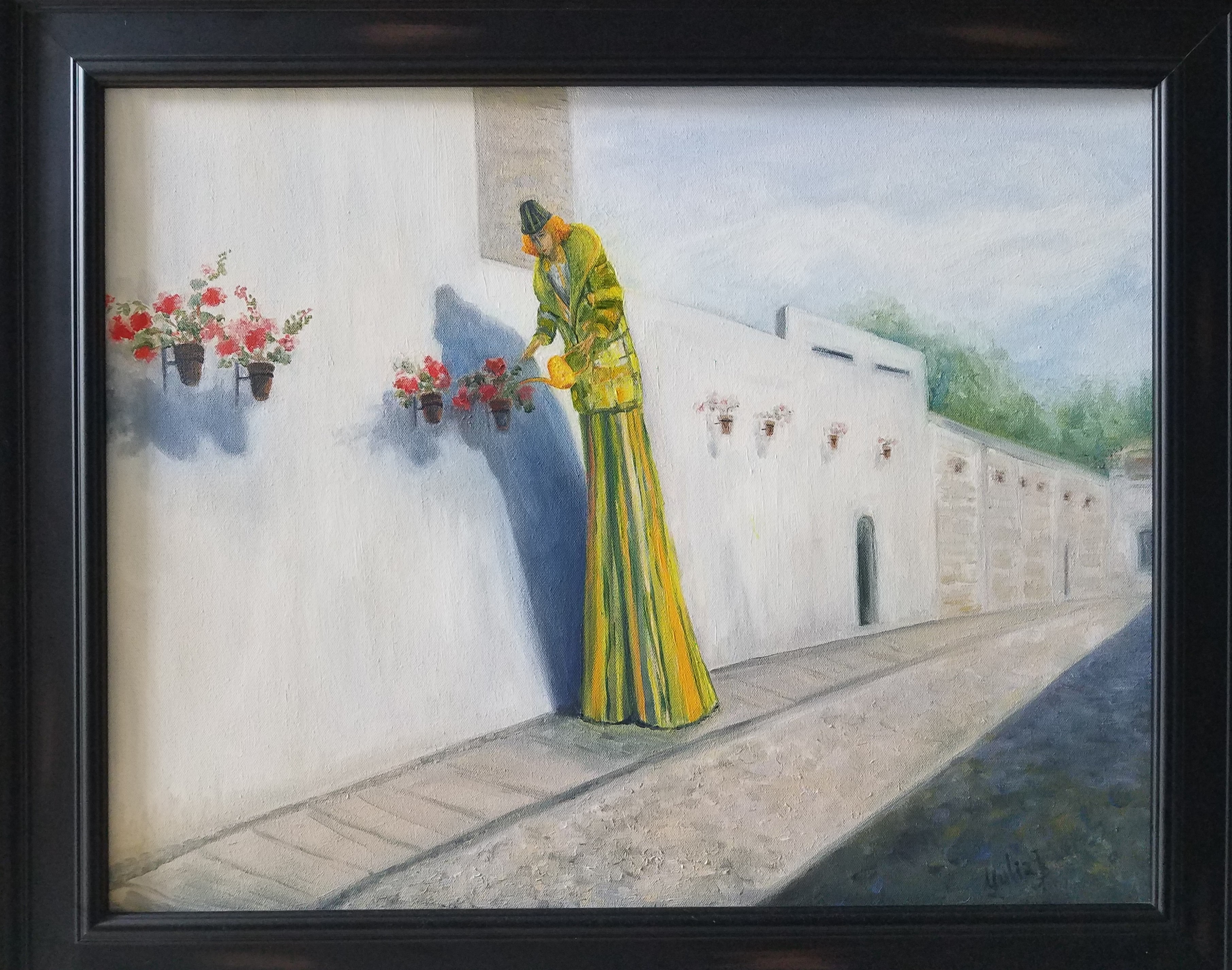
Jeltuhin: I fancy late 17th century Italian street performance characters like Pierrot and Harlequin (including my self-portrait), and scenes of musicians/fiddlers, children in circus school, puppetry and dancers. Since the 17th century, there has been a great influence of European culture (Italian, French, and English) in Russian cities like Moscow and St. Petersburg. In the 19th century, Russian nobility preferred French over Russian. I was brought up reading European authors and art masters.
Jaffe: How does travel come into your work?
Jeltuhin: Husband Sasha and I have a passion for world travel experiences, taking pictures along the way for reference. Then artistically I portray the place’s spirit. That’s where the symbolic characters and performers come in. My “Caretaker” is on stilts in a bright costume reflecting the colorful spirit of Peru. In “Midnight Sailing,” I used a paper boat with puppets playing guitars and singing on a canal in Amsterdam to illustrate romance.
Jaffe: Your collages are brilliant. The International Art Magazine, “Apollo,” last month focused on collage as a relatively modern invention dating back to Picasso’s era, “enabling artists to construct new chronologies and preserve otherwise fleeting moments.”
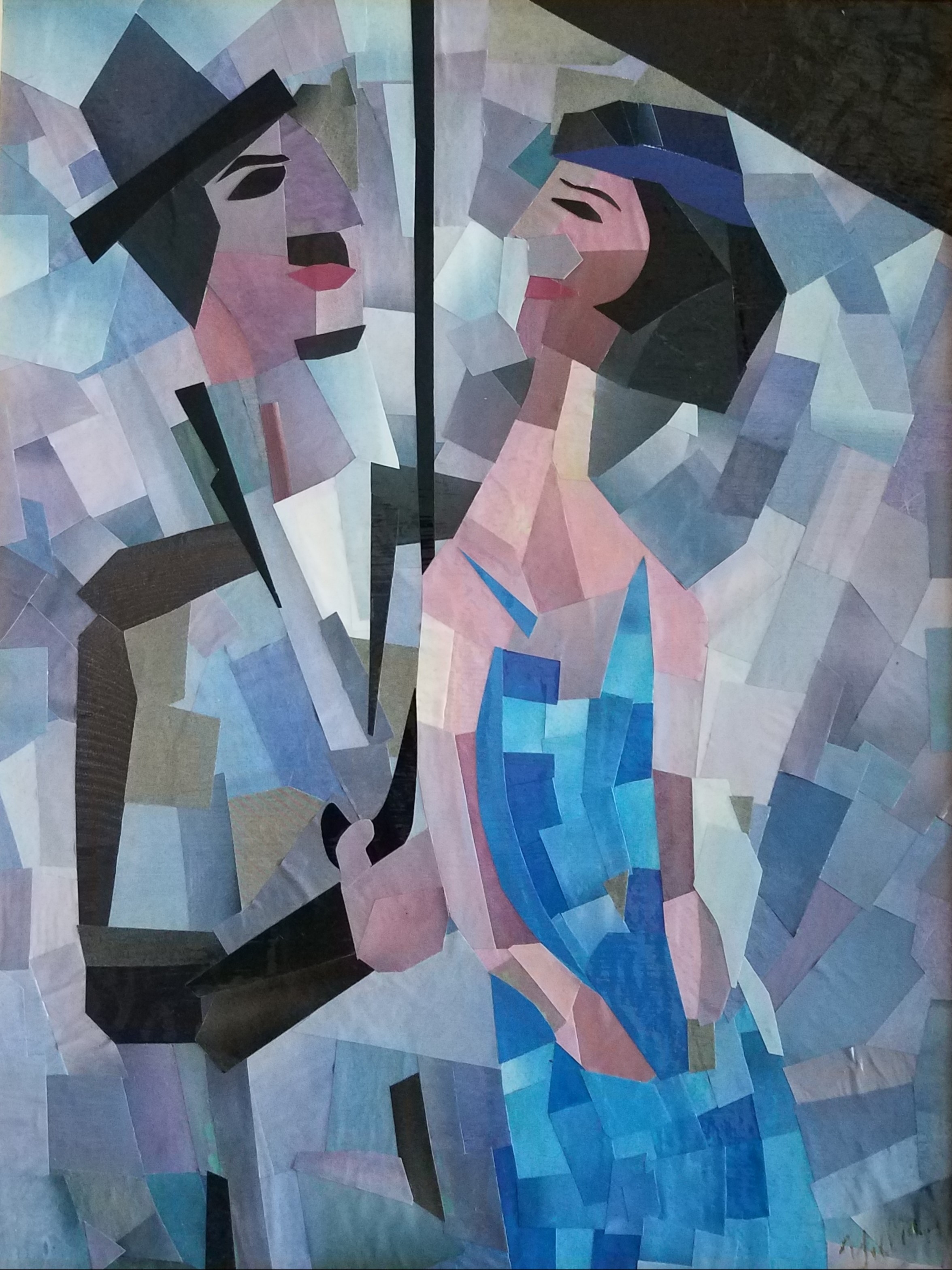
Jeltuhin: It’s about layering, arranging, cutting and sticking. I use magazines and textures with no enhancements, pen nor marker. A cut-out piece is used like a brush stroke. I never use the original images themselves. This technique is time-consuming, but it’s not messy like oils. Dexterity with a scissors helps. I started seriously developing collage style with my first child. It’s hard to care for a baby when your hands are covered with oil paint!
Jaffe: Describe your teaching approach.
Jeltuhin: Most of my students come at least once a week and work in groups of five. They start at age 4 and bring their own materials. I also have private lessons. Many younger siblings come as the older ones go off to college. The class is Montessori-style and can be different ages working on varied projects. I do not have “cookie cutter” stages where everyone draws the same bowl of fruit. I teach a variety of media to make them well-rounded.
Jaffe: What are some of the issues that concern students?
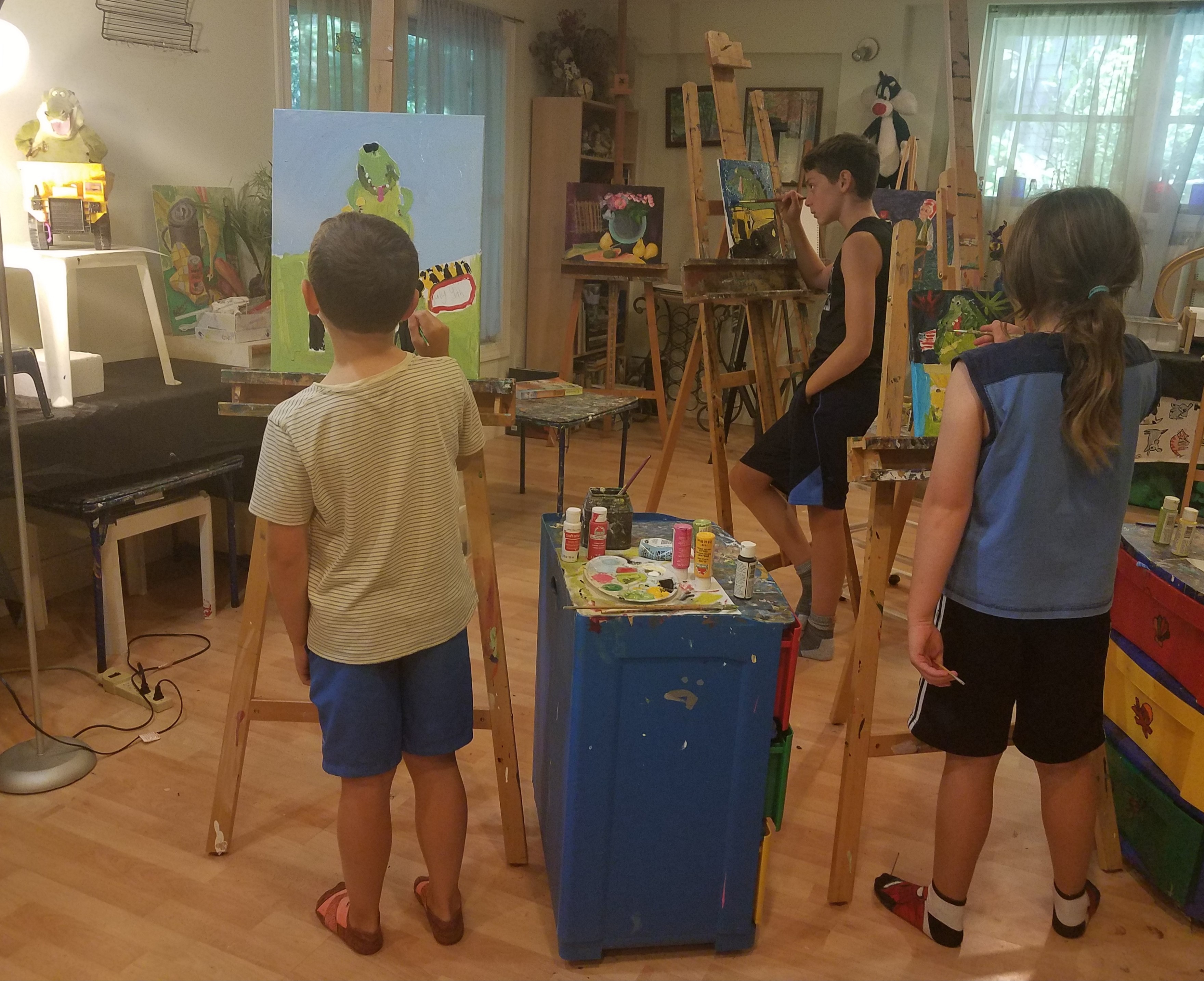
Jeltuhin: Some lack concentration or confidence and have trouble getting motivated. I tell them, “Nothing is impossible, … try to break it down into simple geometric components.” We advance from the basics to the more complicated. It is about physics, how does light travel? Start with a still life. They may choose a toy as a starting point. I encourage them to think and ask questions. If creating a waterfall, what makes the water move? What’s the season and time of day? What makes the water appear deep versus shallow?
We never copy pictures. Sometimes I bring reference images if we can’t place it in the studio. One cannot see a mountain or the ocean from my window. We study materials: wood doesn’t absorb light, light travels through glass and metals shine.
Some worry about “messing up.” No such thing! What feels wrong or out of place in your picture? Are the proportions or perspective incorrect? The goal is for them to be able to critique their own work, to learn to paint and draw without me. Some art studios send kids home with super cool artwork; but children lack basic skills and cannot create anything on their own. My goal is to teach them how to approach and create anything they set their minds to. Art is a skill that will stay with them forever.
Jaffe: Are your children artistic?
Jeltuhin: Yes, in many forms like competing in Latin dancing (one was on “America’s Got Talent”), writing for magazines, and Cirque School. All three of my kids are inclined towards math and science.
My family is a line of educators, like Dad, Leonid Bunimovich, Ph.D., who teaches Theoretical Math: Dynamical Systems, Statistical Mechanics, Space-Time Chaos (and more) at Georgia Tech.
Jaffe: Last word.
Jeltuhin: Even our cat Klyaksa is a work of art, … meaning an accidental drop of ink marking on her expressive face.



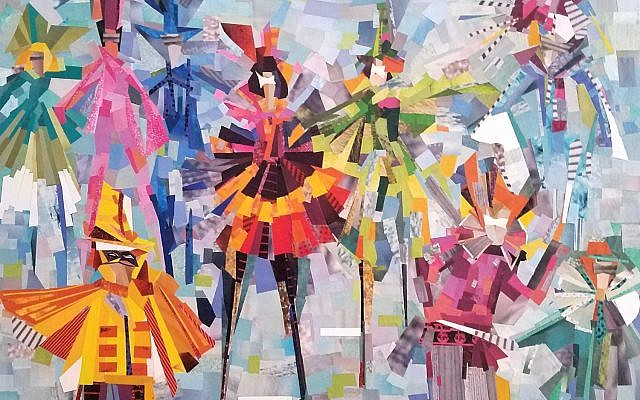
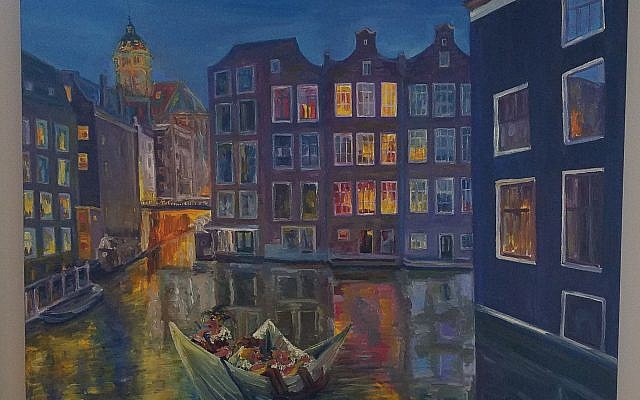
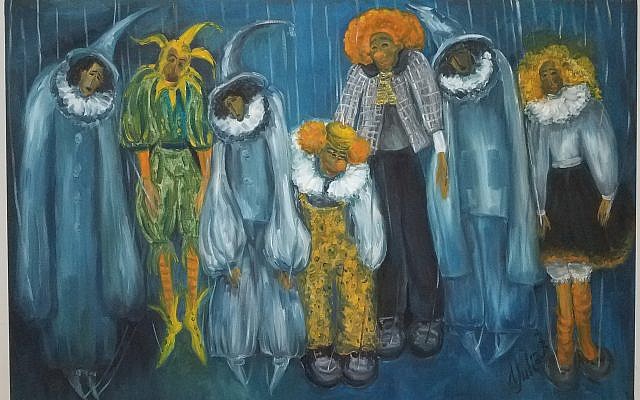
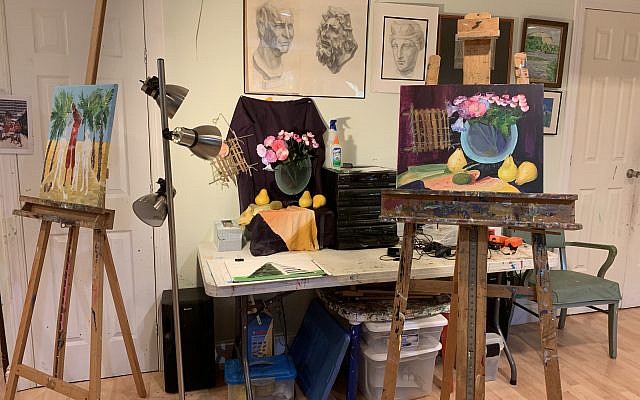
comments